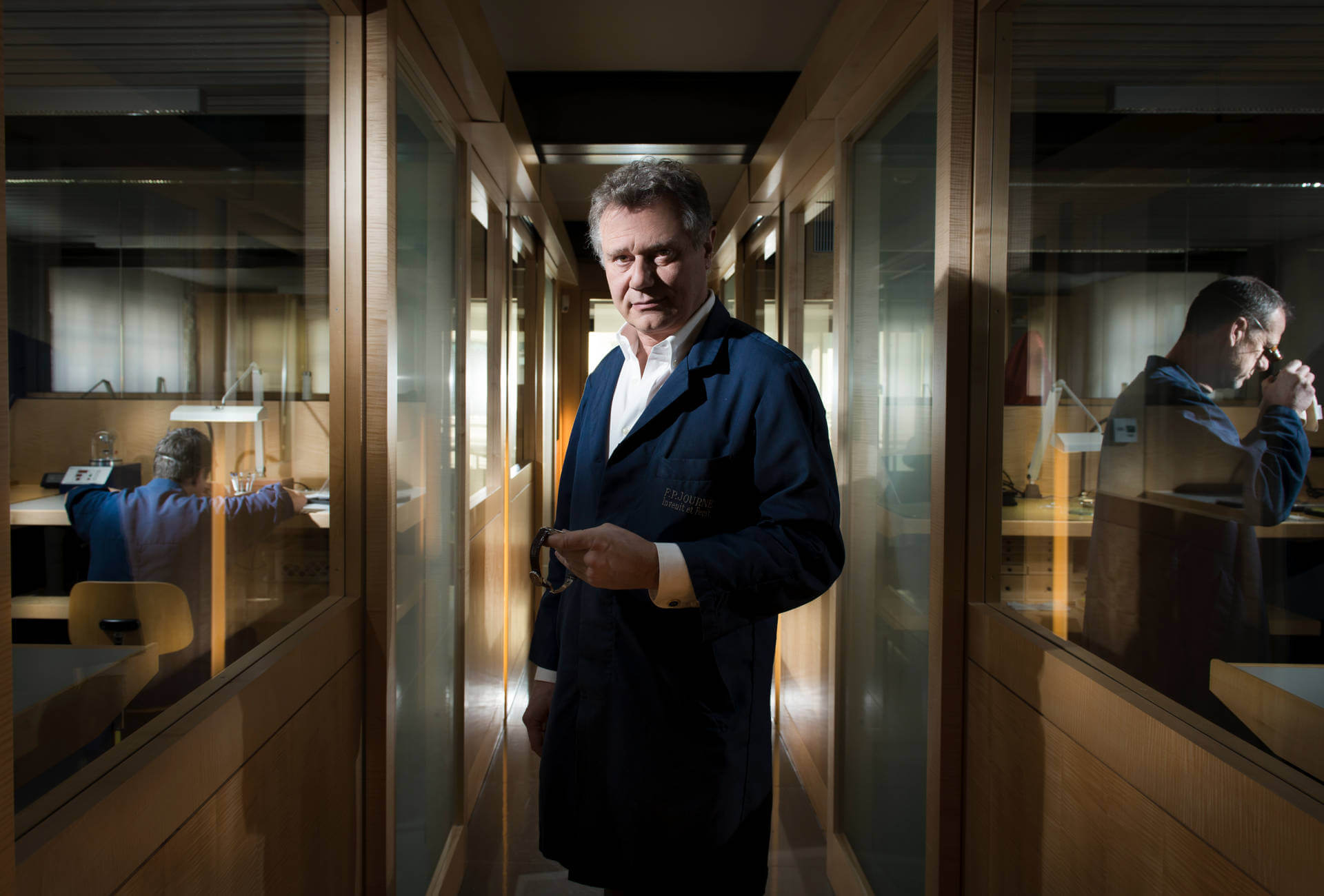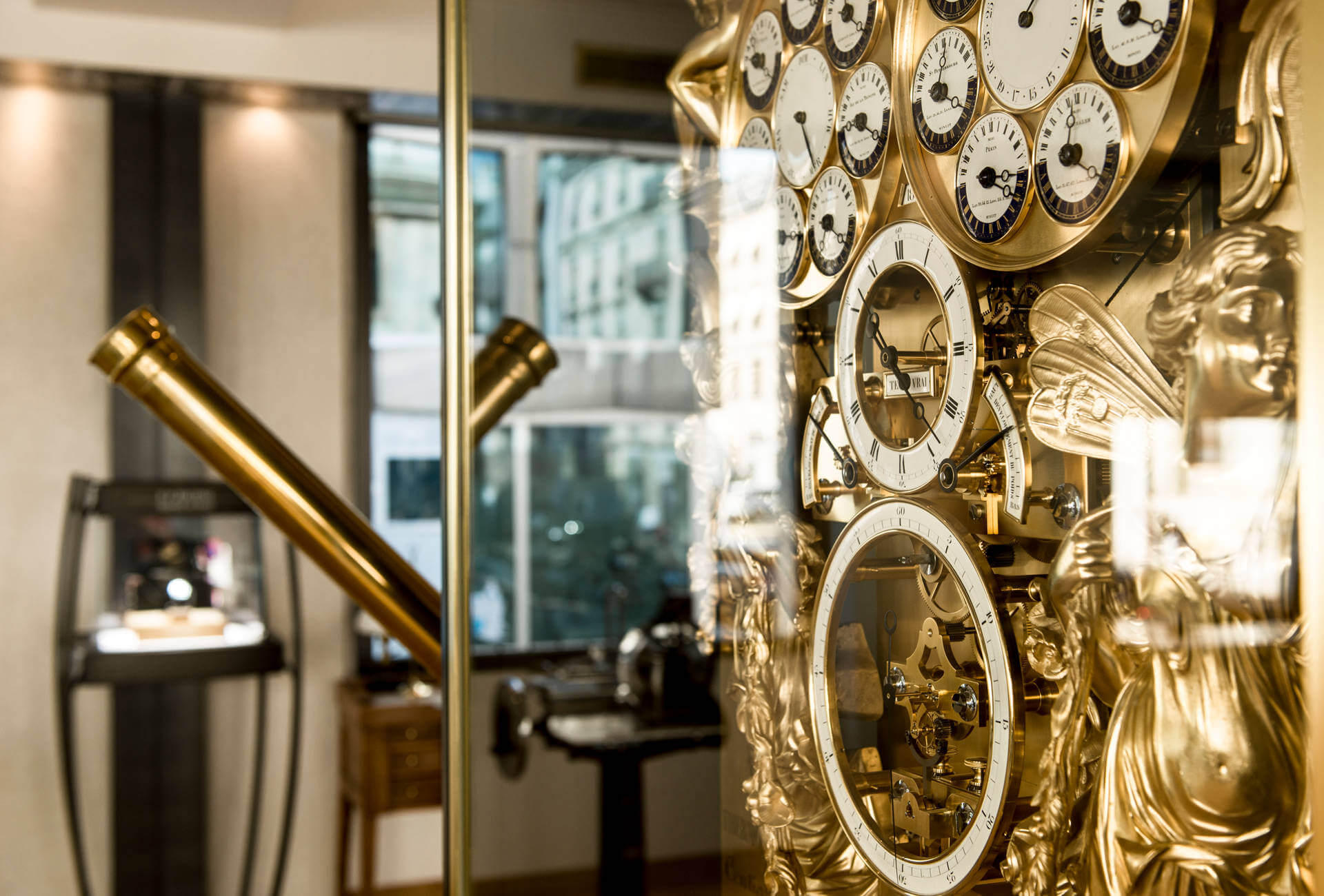Some places, more than others, are inhabited by their owner in every sense of the word. The walls form their intimate landscape, their objects speak for them. Silently, they tell part of their story, intimating their tastes, inspirations and aspirations. François-Paul Journe’s workshop in Geneva is one such place. Stepping into the bright and airy entrance hall of this converted gas lamp factory – built in 1892 and which went on to house activities as diverse as a braces manufacturer and a fashionable ballroom-dancing club – the mood is immediately set: respect for tradition and for the great masters of watchmaking past. Beneath the high ceilings with their reproductions of star charts from the time of Charles V, every detail takes us back to the history of time measurement, and yet there is nothing antiquated about this heartfelt tribute to horology’s finest hours. François-Paul Journe has retained only its splendour, such as the spectacular astronomical clock which Constantin-Louis Detouche made in 1855 for the Exposition Universelle in Paris; a majestic globe that once belonged to the dauphin of King Louis XVI; one of three precision resonance regulators, invented by Antide Janvier circa 1780; correspondence between Louis XVI and Antide Janvier, and the exceptional library of horological essays and manuscripts which his friend Jean-Claude Sabrier patiently amassed, and whose spines display such prestigious names as Ferdinand Berthoud, Pierre Le Roy, Abraham-Louis Breguet and Thomas Mudge. A roll call of the masters whom Journe has revered since his earliest watchmaking days. Those closest to him tell how “he doesn’t drive a limousine or fly a private plane. He’s invested every single penny he has earned in the Manufacture. Watchmaking is his life. It’s all he does.” A life some may consider austere, almost entirely dominated by a single passion.
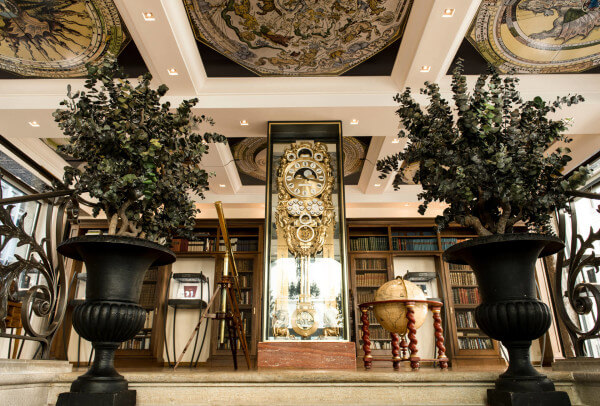
Unlikely beginnings
Journe, who only recently turned 60, started out in watchmaking at 14, although this was hardly an epiphany. “When I started at the watchmaking school in Marseilles [where he was born], it was a case of any port in a storm,” he says with a smile, hinting at a less than glorious school record. “I was expelled after two years. I then enrolled at the Paris watchmaking school but it’s really in my uncle’s restoration workshop that I became aware of this whole world of collectors.” The very ones who now avidly await his every invention, though nothing could have been further from his mind when he settled down to work, an autodidact feeling his way through the subtle mechanisms that would haunt his dreams. Just 20 years old, he was already entranced by the work of the eighteenth century’s master horologists. He completed his first tourbillon pocket watch in 1978. A year later, Ateliers Brun in Paris commissioned him to design a planetarium mechanism for Asprey in London. “When I started making watches, the only thing I cared about was to get them to work,” he recalls. It wasn’t long before collectors were pressuring him for more. A constant-force tourbillon pocket watch in 1982, a pocket chronometer with automatic winding in 1986, a planetary pocket watch in 1987, a sympathique clock in 1988… with each new piece, François-Paul Journe honed his talent, explored the world of complications and, in 1989, said au revoir to Paris and set off for Sainte-Croix in Switzerland, where he opened a movement manufacturing firm with Denis Flageollet and Vianney Halter. Seven years later he set up his own company, TIM SA, supplying complicated calibres – Chronograph, Striking, Mysterious or Sympathique – to a number of Fine Watch firms. City born and bred, the fresh air and countryside of Vallée de Joux were not for him, and so he upped sticks for the hustle and bustle of Geneva.
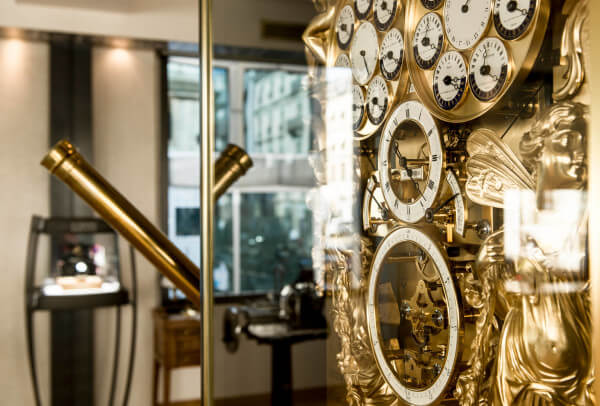
In 2000, barely a year after the launch of the Tourbillon Souverain in wristwatch form, the maiden piece in a collection of chronometers signed F.P. Journe – Invenit et Fecit, he set up his workbench in a corner of what would become his Manufacture, from where he drew an expanding circle of admirers. The very first Octa saw daylight in 2001, paving the way for a prestigious and much feted collection, akin to the Souveraine collection and his research into resonance. This would mark a turning-point in the career of a man who, a few decades earlier, had never imagined that from this “port in a storm” one of independent watchmaking’s finest vessels would set sail.
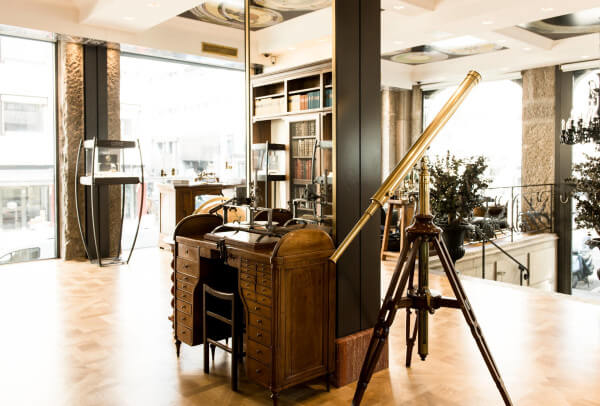
No end of ideas
Through sheer grit and determination, more at home in his watchmaker’s coat than in his businessman’s suit, François-Paul Journe has developed his company with no uncertain talent. The fleet of machinery on the ground floor of his Genevan workshop equips him to machine the parts of his 18k pink gold movements – a hallmark of the brand.
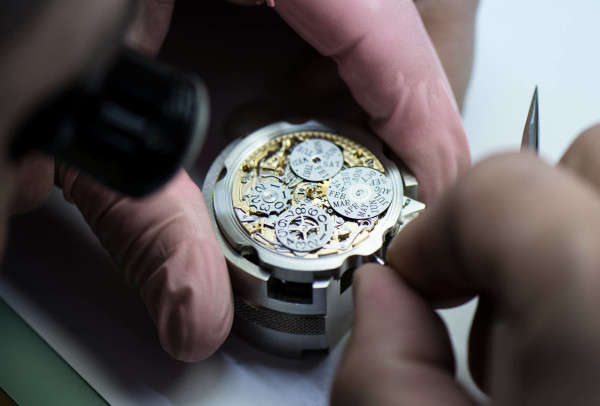
On the first floor, amidst deafening silence and walls now stripped of any reference to watchmaking history, these movements are assembled, decorated, chamfered, jewelled and polished. Dials and cases are made in Meyrin respectively by Les Cadraniers de Genève and Les Boîtiers de Genève. F.P Journe held a stake in both, alongside Harry Winston then Vacheron Constantin, before recently acquiring full control. Except for hands, sapphire crystals and balance springs, which are made by Nivarox, F.P Journe is his own man, producing 900 watches a year which are 95% manufactured in Geneva. With some 60 people employed at the Manufacture, another 40 or so at Les Cadraniers and Les Boîtiers de Genève, and a further thirty-some in the brand’s 11 stores –including three in partnership – F.P. Journe continues to write his own story while embracing the legacy of the great masters. “You wouldn’t believe the number of projects he has on the back burner,” his entourage confides. He admits his ideas for a new tourbillon have come up against a wall, but is plugging away at an astronomical complication that should be unveiled next year. “The project got under way in 2004, but before you can make a watch, you need to find the right recipe and choose the right ingredients. That took me eight years, plus two years drafting the design. At 750 components, it will be my most complicated watch yet in terms of number of parts.” Among his other projects, François-Paul Journe dreams of extending the Manufacture to house a watchmaking school where he can pass on the precious knowledge and expertise he taught himself, so that others might “invent and make” too.








